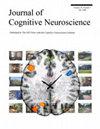A Functional Magnetic Resonance Imaging Study of Phrase Structure and Subject Island Violations
IF 3.1
3区 医学
Q2 NEUROSCIENCES
引用次数: 0
Abstract
In principle, functional neuroimaging provides uniquely informative data in addressing linguistic questions, because it can indicate distinct processes that are not apparent from behavioral data alone. This could involve adjudicating the source of unacceptability via the different patterns of elicited brain responses to different ungrammatical sentence types. However, it is difficult to interpret brain activations to syntactic violations. Such responses could reflect processes that have nothing intrinsically related to linguistic representations, such as domain-general executive function abilities. To facilitate the potential use of functional neuroimaging methods to identify the source of different syntactic violations, we conducted a functional magnetic resonance imaging experiment to identify the brain activation maps associated with two distinct syntactic violation types: phrase structure (created by inverting the order of two adjacent words within a sentence) and subject islands (created by extracting a wh-phrase out of an embedded subject). The comparison of these violations to control sentences surprisingly showed no indication of a generalized violation response, with almost completely divergent activation patterns. Phrase structure violations seemingly activated regions previously implicated in verbal working memory and structural complexity in sentence processing, whereas the subject islands appeared to activate regions previously implicated in conceptual-semantic processing, broadly defined. We review our findings in the context of previous research on syntactic and semantic violations using ERPs. Although our results suggest potentially distinct underlying mechanisms underlying phrase structure and subject island violations, our results are tentative and suggest important methodological considerations for future research in this area.词组结构和主题岛违规的功能磁共振成像研究
原则上,功能神经影像学在解决语言学问题时能提供独一无二的信息数据,因为它能显示仅从行为数据中无法看出的独特过程。这可能涉及到通过大脑对不同非语法句子类型的不同反应模式来判断不可接受性的来源。然而,很难解释大脑对句法违规行为的激活。这些反应可能反映了与语言表征没有任何内在联系的过程,如一般领域的执行功能能力。为了便于使用功能神经影像学方法识别不同句法违规的来源,我们进行了一项功能磁共振成像实验,以识别与两种不同句法违规类型相关的大脑激活图谱:短语结构(通过颠倒句子中两个相邻单词的顺序而产生)和主语岛(通过从嵌入的主语中提取一个wh短语而产生)。令人惊讶的是,将这些违规句子与对照句子进行比较后发现,没有迹象表明存在普遍的违规反应,激活模式几乎完全不同。短语结构违规似乎激活了以前与句子处理中的言语工作记忆和结构复杂性有关的区域,而主语岛似乎激活了以前与广义概念-语义处理有关的区域。我们结合之前使用 ERPs 对句法和语义违规的研究,回顾了我们的发现。尽管我们的研究结果表明短语结构和主题岛违规行为的潜在机制可能是不同的,但我们的研究结果只是初步的,并为这一领域未来的研究提出了重要的方法论考虑。
本文章由计算机程序翻译,如有差异,请以英文原文为准。
求助全文
约1分钟内获得全文
求助全文
来源期刊
CiteScore
5.30
自引率
3.10%
发文量
151
审稿时长
3-8 weeks
期刊介绍:
Journal of Cognitive Neuroscience investigates brain–behavior interaction and promotes lively interchange among the mind sciences.

 求助内容:
求助内容: 应助结果提醒方式:
应助结果提醒方式:


